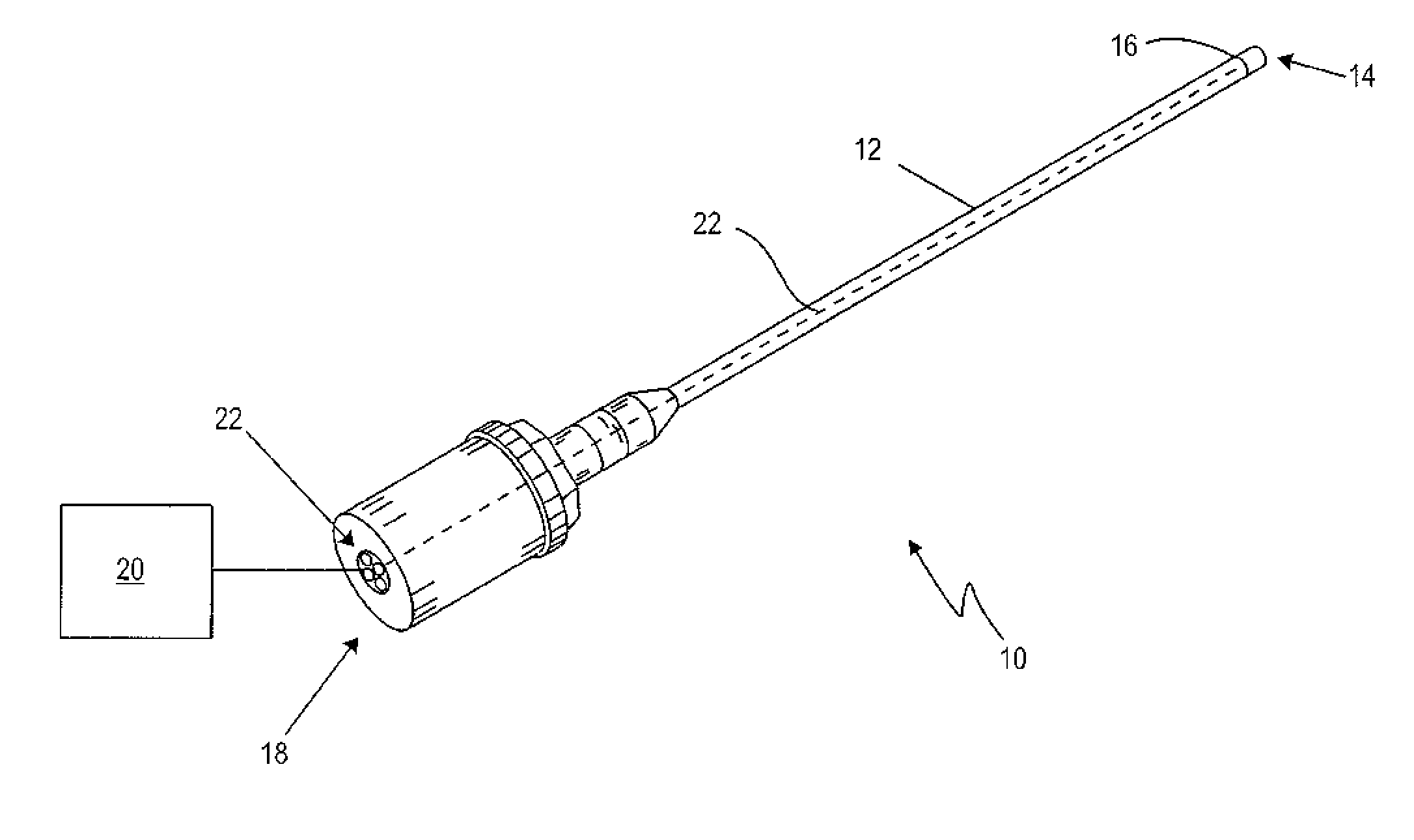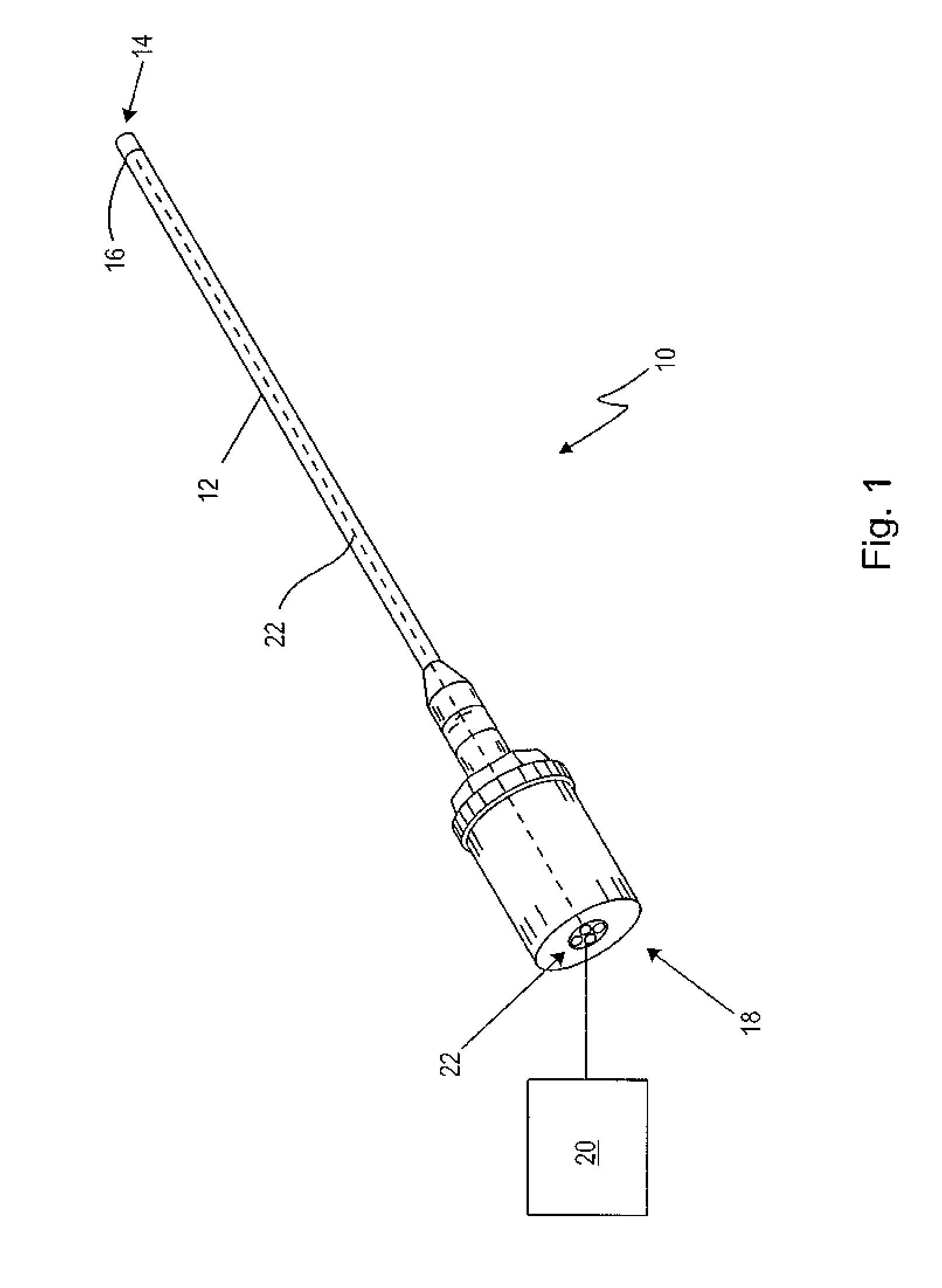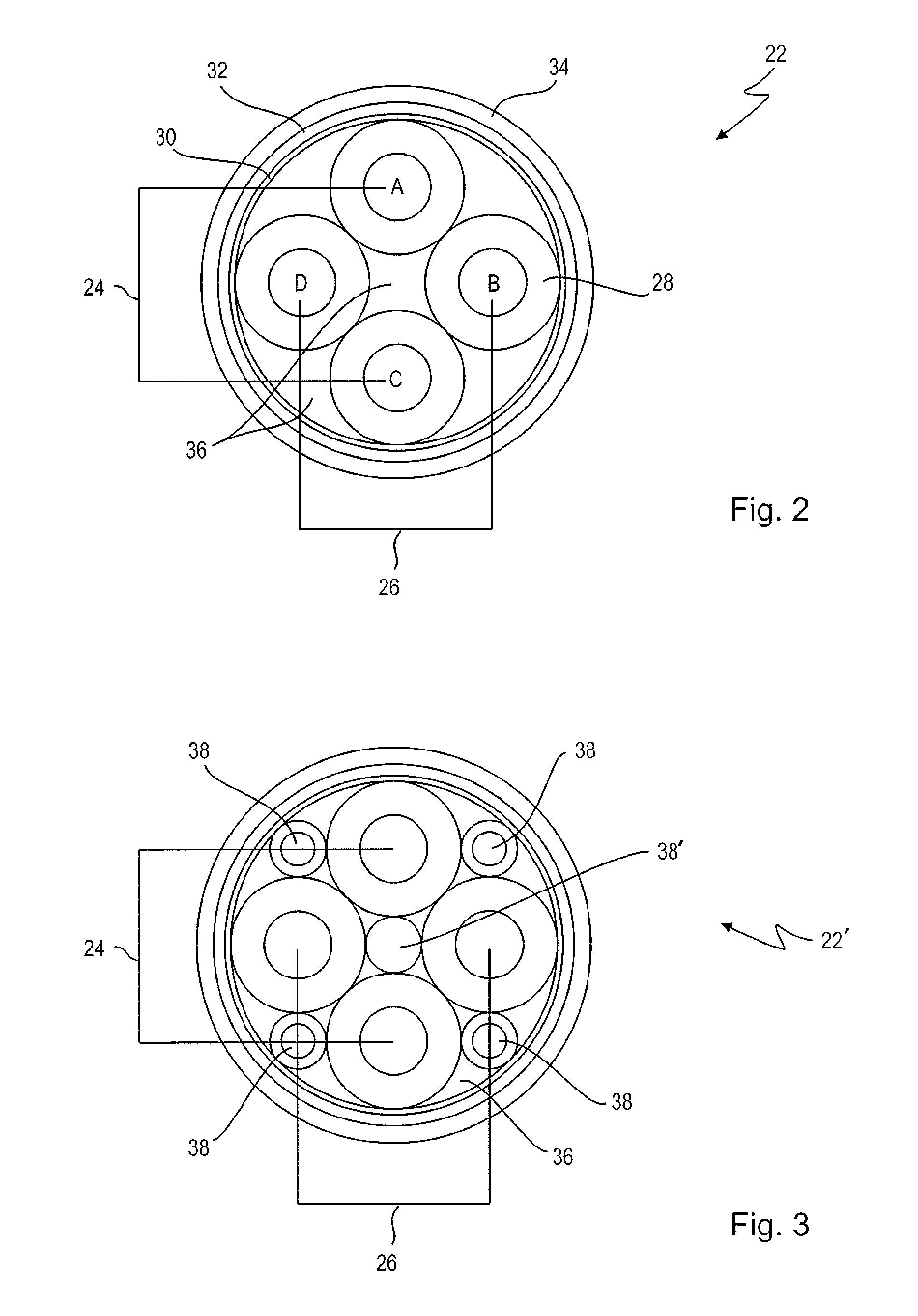Endoscopic Instrument
a technology of endoscopic instruments and control units, which is applied in the field of endoscopic instruments, can solve the problems of difficult implementation of parallel interfaces, difficult to provide image data processing units and control units for these sensors at the distal end of the endoscopic instrument, and limited space and power consumption
- Summary
- Abstract
- Description
- Claims
- Application Information
AI Technical Summary
Benefits of technology
Problems solved by technology
Method used
Image
Examples
Embodiment Construction
[0073]FIG. 1 shows a preferred embodiment of an endoscopic instrument 10. The endoscopic instrument 10, which is embodied as an endoscope, comprises a shaft 12, which has a distal end 14 at which an optical sensor 16 is arranged, and a proximal end 18 for connection to a supply unit 20. Between the optical sensor 16 and the proximal end 18 a data transmission element is arranged. The data transmission element is configured to transmit at least two signals differentially. The data transmission element is configured as a star quad cable 22. In a further embodiment (not shown), the star quad cable 22 continues over the proximal end 18 to the supply unit 20. Further, an optical unit (not shown) may be associated with the optical sensor 16, the optical unit being provided distally, i.e. in the optical path, before the optical sensor 16. Therefore, the optical sensor 16 may or may not be arranged at the very distal end of the endoscopic instrument 10.
[0074]FIG. 2 shows a schematic cross s...
PUM
 Login to View More
Login to View More Abstract
Description
Claims
Application Information
 Login to View More
Login to View More - R&D
- Intellectual Property
- Life Sciences
- Materials
- Tech Scout
- Unparalleled Data Quality
- Higher Quality Content
- 60% Fewer Hallucinations
Browse by: Latest US Patents, China's latest patents, Technical Efficacy Thesaurus, Application Domain, Technology Topic, Popular Technical Reports.
© 2025 PatSnap. All rights reserved.Legal|Privacy policy|Modern Slavery Act Transparency Statement|Sitemap|About US| Contact US: help@patsnap.com



